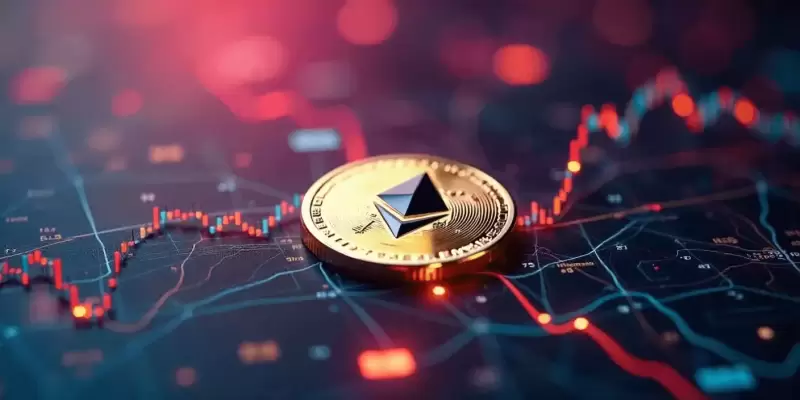 |
|
 |
|
 |
|
 |
|
 |
|
 |
|
 |
|
 |
|
 |
|
 |
|
 |
|
 |
|
 |
|
 |
|
 |
|
Cryptocurrency News Articles
The Future of Web3 is Aggregated: Introducing the AggLayer
Oct 11, 2024 at 04:02 am
New technology can change old ways of being to make life easier. The printing press led to mass literacy; with the development of steam power, the horse and buggy became trains and cars; the washing machine mechanized hours of hand-washing; and on and on.

The AggLayer will accelerate existing use cases and open up the design space for verticals to capture new value in new ways. Here are a few examples:
DeFi
Currently, liquidity and users are spread across multiple blockchains and dApps. Developers are limited to the chains on which they deploy, and users must navigate these fragmented ecosystems, resulting in a suboptimal user experience. To move assets across chains, users must rely on bridges, which can be costly. Canonical bridges take a long time and can be expensive, while third-party bridges introduce additional security risks and require wrapped assets, which are inconvenient for both users and developers.
The AggLayer aggregates liquidity across blockchains, eliminating the need for developers to deploy on multiple chains, liquidity to be split across multiple chains, developers to create new liquidity for every wrapped token on a chain, and users to use bridges, opening up new, expanded design spaces for developers to truly build DeFi for a unified crypto.
Low costs and faster finality: Users can execute transactions at much lower costs because proof aggregation optimizes and amortizes gas fees across the entire AggLayer ecosystem. Aggregated transactions also mean faster finality on Ethereum. The cost of posting proofs is lower because it is amortized over multiple chains, allowing for those proofs to be posted more often at a lower cost.
Gaming
For game developers, a fragmented ecosystem presents several challenges. Attracting users to a new game can be difficult, especially considering the chain deployment and Web3 integrations.
The AggLayer aims to alleviate this pain point.
âš”ï¸ TOP 3âš”ï¸ @Ronin_Network is using Polygon CDK to build a zk L2, meaning the top three gaming networks use Polygon tech
with this move, Ronin can also decide to tap into the AggLayer, joining a unified environment for the largest gaming community in web3
https://t.co/2SQCa6OE3Y
AggLayer solution: Competitive gaming ecosystems become win-win, so gamers aren’t locked into a single chain. Connections will include Ronin, Immutable, Moonveil, and Wilder World, among many others.
Easy onboarding: The AggLayer dramatically simplifies the process of onboarding to the ecosystem. Any connection by any chain to any CEX is a connection to the entire ecosystem. This makes it easier for new games and new gaming chains to tap into existing users and liquidity; one CEX connection to one chain is a CEX connection to all, and with secure, seamless cross-chain transfers, it’ll be easier than ever for new games to find players from existing chains, like Ronin or Immutable X.
RWAs
The lack of interoperability between blockchains is the biggest obstacle to widespread adoption of real world assets (RWAs) in DeFi, preventing the formation of RWA markets. The current landscape is more like a series of venues than a true environment where RWAs can thrive.
With the pessimistic proof powering the AggLayer, there are some RWA issuers looking at doing some really interesting things to support all of the chains easily 👀 https://t.co/3Su3j8wYhw
AggLayer Solution: With the AggLayer, integration between disparate RWA systems can become easy. In a unified environment, a true market for RWAs becomes a real possibility.
AI / DePIN
A fragmented infrastructure causes inefficiencies in data sharing and model integration for AI and other DePIN systems. This results in increased complexity and costs due to multiple platforms and custom integrations, while also fragmenting standards and resulting in interoperability issues. There’s also the problem of security: ensuring AI and other DePIN infra is safe is extremely complex in decentralized systems.
Dimo & Geodnet killing it on DePIN front
DePIN On @0xPolygon 🔥 https://t.co/8Q3uDLmlQv
AggLayer solution: Easier integrations and better cross-chain data sharing.
Lower costs: Standardized protocols reduce the need for expensive custom solutions.
Novel Use Cases
AggLayer enables limitless use cases. As more chains join the AggLayer, new, imaginative use cases will be unlocked.
AggLayer Solution: The AggLayer not only aggregates DeFi liquidity, but also data and unique information that is shared between chains. The vast improvements in cross-chain data sharing and unified application interfaces enable things we have never seen deployed onchain.
Disclaimer:info@kdj.com
The information provided is not trading advice. kdj.com does not assume any responsibility for any investments made based on the information provided in this article. Cryptocurrencies are highly volatile and it is highly recommended that you invest with caution after thorough research!
If you believe that the content used on this website infringes your copyright, please contact us immediately (info@kdj.com) and we will delete it promptly.


























































